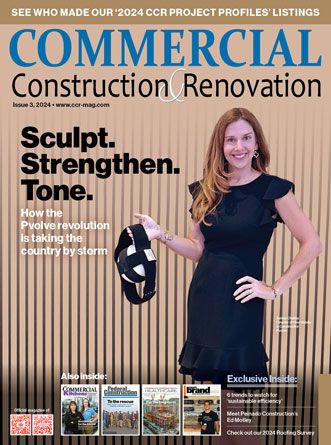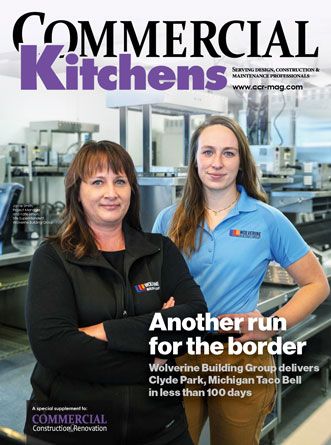 Lynn Young recently became a UC Master Gardener. Since then, along with conducting workshops, creating content and garden designs, she has used the experience as some much needed downtime during these pandemic-stricken days. It has also helped her with her newfound business interest in the growing cannabis market. With a background in commercial and residential property management, she recently shifted into providing design and construction consultation and project management services for retailers in the growing cannabis marketplace.
Lynn Young recently became a UC Master Gardener. Since then, along with conducting workshops, creating content and garden designs, she has used the experience as some much needed downtime during these pandemic-stricken days. It has also helped her with her newfound business interest in the growing cannabis market. With a background in commercial and residential property management, she recently shifted into providing design and construction consultation and project management services for retailers in the growing cannabis marketplace.
As VP of Seed to Flower, Young is spearheading a number of development initiatives for cannabis agriculture and horticulture. In her new role, the Melrose Hills, California resident, realtor at Keller Williams Beverly Hills, and certified herbalist is helping bring a new vibe to a marketplace with worlds of opportunity.
We sat down with her to get a snapshot of the growing cannabis market and how it continues to be a segment the commercial construction area should watch for opportunities.
Give us a snapshot of your brand?
My brand includes horticulture/agriculture grow initiatives, commercial real estate, and design and construction-consultation/management.
What type of client/customer are you targeting?
I recently made my service inclusive to design and construction consultation/management, horticulture and agriculture grow initiatives and CRE (Commercial Real Estate). The increasing demand for ownership made it a good time to incorporate my real estate experience to those looking to startup or expand their cannabis brand.
While working on design and construction projects, I became aware of the need for real estate in the cannabis industry. It needed real estate for cannabis operations: cultivation, manufacture, distribution and product sales.
I also noticed some owners/investors lacked knowledge thereof, purchasing or leasing under predatory business contracts. Due to location regulations and zoning restrictions, real estate became somewhat difficult to secure due to scarcity. To create balance, I wanted to offer ethical real estate solutions and have my client’s best interests. As a commercial realtor with Keller Williams Beverly Hills, my target client would be looking to secure real estate property through purchase or lease for cannabis operations.
I recently had an opportunity to join Seed to Flower in efforts to develop its agriculture/horticulture grow initiatives. Here, we focus on the consumer as a grower. With new markets, new brands will rise and increase consumer spending.
On a design level, we are working more closely with the stakeholders on the importance of educating the consumer about the products. This can be as simple as incorporating labeling on shelves, wall units or adding light boxes to the design plans.
Tell us about Seed to Flower.
Seed to Flower’s target is the underserved consumers who may lack education of cannabis strains, proper dosage and use. It is those people who want to avoid the cannabis retail dispensary crowds that lack access to dispensaries and are without the income to obtain cannabis from dispensaries due to high costs. We are committed to making their needs a priority and to lower the barriers to specific demographics in a pivot or perish industry.
Our common consumer would be interested in growing their own cannabis. Self-grow is gratifying. You know exactly what you are consuming. It reduces the cost of seed money to get started: You will have a constant stock. You can control your climate, production, pest management and nutrients with options of indoor or outdoor grow, and you will save money.
Was the store deemed essential during the lockdown?
Medical cannabis dispensaries were deemed essential during the coronavirus pandemic in Los Angeles and other counties for those with permits to sale. The cannabis dispensaries were treated like pharmacies, which I supported. Medical marijuana was the push for recreational use.
The decision to keep the dispensaries open for the importance of access would prevent panic buying from the black market. But upon visiting local dispensaries, I was surprised to see how many misses on the high touch list. I would suggest future designs include steps for safer shop spaces.
What kind of adjustments have you made (or are you planning) to make in order to cater to how customers are engaging in cannabis?
Through exploration of consumer buying, the data obtained allowed motivation for us to make adjustments in the area of education. We became more aware of consumer behavior after each store opening.
The design and layout played a pivotal role in understanding how to meet customers’ needs from a design perspective—understanding what aspect of the retail operation the customer finds engaging and what influences their buying decisions. Once these relationships were explored, it was a no brainer in understanding the significant role design and construction plays in creating a customer-friendly environment and product knowledge.
On a design level, we are working more closely with the stakeholders on the importance of educating the consumer about the products. This can be as simple as incorporating labeling on shelves, wall units or adding light boxes to the design plans. We wanted to stand behind design ideas that actually work for the customer and really create a unique experience.
As with any other specialized real estate market, it is vital to become educated on the cannabis industry, state and local regulations and the geographic area targeted for investment.
What type of areas do you look for when seeking store locations?
Typically, you want to seek a cannabis space that gets the client beyond the challenges of regulations. Location plays a major role in the success of a retail operation. Depending on location, one can decide to operate as a retail cannabis dispensary, cultivation facility, distribution facility or outdoor greenhouse.
For retail operations, it would be very lucrative to locate a space that is visible in a thriving retail area. Locating space that supports the vision of the client is a key factor.
We are committed to making their needs a priority and to lower the barriers to specific demographics in a pivot or perish industry.
What is the best piece of advice you can offer to other brands on how to deal with what is happening right now in the marketplace?
Play your role in sustainability, social impact and social equity. Help end institutional racism, and promote equitable ownership and employment in the cannabis industry.
Increase your retail presence and exposure. Invest in creative and inviting storefront designs that appeal to customers. Your design tells a story. Display quality products and easy navigation. We want a pleasant shopping experience.
Promote your business. Many dispensaries lack a strong visual digital presence, especially when 83% of the population uses social media and other digital formats for everything. Capture that audience. Be inclusive. Look ahead. Include design ideas that will support future pandemics. Interact with the community and support organizations aligned with the company’s mission. Build brand awareness. Keep it true to the culture. Look into collaborations with musicians, local artists and activists to keep the brand engaging.
Talk about sustainability. What are you doing?
There was no better time to slow things down and lay the foundation for sustainability than during COVID-19. The pandemic afforded time to look deep into the meaning of sustainability. “The ability to exist constantly.” It was important for me to continue good habits and maintain a platform of social, economic and environmental value.
COVID-19 caused unimaginable devastation. The virus exposed poverty, hunger, health issues and disconnection to the land. As conditions worsen, I received a huge outpouring of people wanting to know more about growing their own food, cultivating cannabis and alternative remedies. Through interaction via social media, videos and personal consultations, backyard gardening was offered, which highlighted “Plant in a Pot” as a solution to growing your own vegetables, herbs and edible plants providing a sustainable food source. It became very popular for those with limited grow space.
For those who were not able to take the risk and visit the dispensary and lacked income, our Autoflower platform was a huge sustainable victory. It educated new growers on self-grow of cannabis, quickly. It requires little to no training. In addition to these two efforts, I personally continue the use of paper goods, look for bio-degradable packaging, create self-watering systems in the garden from recycled plastic bottles and introduce home composting.
What type of opportunities do you see moving ahead?
There are so many diverse opportunities being presented. I am fortunate that I can weave them under one umbrella. I recently had an opportunity to join Seed to Flower in efforts to develop their agriculture/horticulture grow initiatives. Here, we focus on the consumer as a grower. With new markets, new brands will rise and increase consumer spending.
Seed to Flower targets the underserved consumers who may lack education of cannabis strains, proper dosage and use—those wanting to avoid the cannabis retail dispensary crowds that lack access to dispensaries and are without the income to obtain cannabis from dispensaries due to high costs.
Seed to Flower’s target is the underserved consumers who may lack education of cannabis strains, proper dosage and use.
We are committed to making their needs a priority and to lower the barriers to specific demographics in a pivot or perish industry.
Recently, I was featured in MG Magazine, where I discussed cannabis safety during COVID-19 and gave some really great design safety ideas. Future opportunities that are in discussions are in real estate. I am looking forward to doing great business in the cannabis real estate market.
As the cannabis industry grows and becomes more inclusive, the need for storefronts and land to develop will increase as well. Locating the best property to start or expand a business, with knowledge on how to manage a construction project really excites me. I really get to implement best practices and due diligence beyond what the owner/client/investor may be knowledgeable of.
Increased social equity involvement. There are myriad opportunities to partner with businesses and extend support to individuals who have been disproportionately impacted by the previous criminalization of cannabis activities in states such as Michigan, which seems to still be experiencing growing pains.
You should also be partnering and/or collaborating with dispensary projects outside the United States. We have discussions on the table for design and construction project management of dispensaries. We currently teamed up with a local company that sells indoor grow tents. This will support our cannabis self-grow initiatives. Teaming up with local dispensaries and farmers for the sale of clones and local farmers for seeds for our grow initiative. In addition, there are master gardeners and landscape architects, designers and horticulturalists interested in weaving cannabis into their grow programs and lifestyle.
There are so many diverse opportunities being presented. I am fortunate that I can weave them under one umbrella.
What trends are you seeing or expecting?
There will be an increase of contract farming, which many know as sharecropping. Contract farming allows landowners to hire experienced marijuana growers to run the farm with a spilt of profits.
The wellness movement continues to grow. People continue to understand the importance of being in good mental, physical and emotional health. That means incorporating more alternative practices into your routine, such as, reiki, yoga, meditation, acupuncture, massages, color balance therapy, art therapy, music therapy and therapeutic touch.
In addition, hemp for regenerative agriculture, and the purchase or contract of land for cannabis business development is growing.
What is the secret to creating a “must visit” location in today’s competitive landscape?
Customization. Design. Branding. Marketing. As it relates to retail, customers want to have a great experience. We want to be a part of the hype, long lines and feel we are investing in something good and believe in the culture of cannabis.
- Marketing. Get your name out there. Let everyone know why you are the best and why they should come visit. Get creative with your marketing plans. Draw from the community to make them feel recognized.
- Branding. Feel good about your brand and show it. Invest in trendy T-shirts and hoodies, lighter holders, stickers and other cool accessories. We love to showcase our favorite cannabis brand. It gives us a sense of pride.
- Customization. Create signatures colors and fonts. Storefronts invest in cool signs and images that capture artistry and excitement. Everyone is on social media making videos, taking pictures, and creating stories. Consumers love to use images and signage for backdrops.
Designs and instore layouts are important. Where are you taking the customer? What type of experience are they going to have while engaging with the product? Keep the space open and free for mobility and accessibility. The layout of a store is pivotal.
What is today’s client/owner/investor looking for?
Today’s client is looking for the full experience. They want the best location, space, design plans, great product, the ultimate consumer and return on their investments. They want it all.
I come from the best of two worlds, real estate, and design and construction. What makes my brand unique is that we are in a position to work closely with the owners/investors from a buyer/seller perspective with knowledge of what the client is looking for as far a commercial space. We also have the experience in knowing what space will work best for the vision and design plans by conducting due diligence reports.
This knowledge enables the owner/investors to plan according to the condition of the building, understand costs, replacements, useful life of the building, lifespan of building systems, proper budgeting, return on investments, and overall project construction management.
We also have the knowledge to develop facility management systems post construction for owners to maintain the physical conditions, develop annual, capital budgets and prioritize resources. Facility management often is looked over by cannabis business owners. It is a huge fail and impacts the value of their assets. Proper investing and planning will deliver the full experience and afford uniqueness to the brand.
_________________________________________________________
One-on-One with…
Lynn Young, consultant/manager designed projects & VP, Seed to Flower
Describe a typical day.
I usually start my day off with meditation, and a warm cup of herbal tea or coffee. Then I will settle in to begin responding to incoming requests and orders, provide consultation, and follow up with clients. Due to the pandemic, I have attended several Zoom meetings during the week as well.
What’s the biggest thing on your to-do list right now?
Organizing, prioritizing and managing project milestones, building a real estate presence, and creating marketing strategies.
What’s the most rewarding part of your career?
Watching dreams come to fruition. We love to see our clients learn, become established and grow.
What was the best advice you ever received?
Do all things with love and care.
What’s the best thing a client ever said to you?
Thank you for supporting me.
How do you like to spend your down time?
In my garden. As a recent UC Master Gardener graduate, I enjoy conducting workshops, creating content and garden designs.
_________________________________________________________
Story by Michael J. Pallerino, editor of Commercial Construction & Renovation magazine. Over the past 30-plus years, he has won numerous awards, including the “Jesse H. Neal Editorial Achievement Award,” recognized as the Pulitzer Prize for business-to-business magazines. He can be reached at mikep@ccr-mag.com.










 The 2024 virtual Men’s Round Table will be held Q4, 2024, date TBD.
The 2024 virtual Men’s Round Table will be held Q4, 2024, date TBD.











